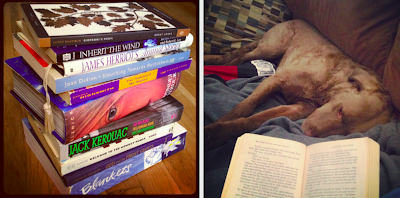The Brothers Grimm Fairy Tales
Translations from the Grimms' Kinder und Hausmarchen by Edgar Taylor and Marian Edwardes
★★★★☆
Most people know many of the Grimm Fairy Tales without ever reading the book. We are all raised on Disney recreations of the stories, but I wanted to read the originals and I’m so glad I did. This collection includes all the classic tales along with dozens more I’d never heard of before. I was surprised by how short some of the stories are and how much darker the tone of the whole book is. Some of the stories are pretty weird.
There are a few major themes throughout the book. Stepmothers and stepdaughter are big, they always hate each other. It’s not surprising to see that the animosity associated with those titles is still around today. Each story with step family includes a lot of resentment and dislike. There’s also a lot of changing people into things, flowers, ducks, frogs, etc. to disguise themselves or as a punishment.
Some of the tales are familiar and it’s not a surprise that they made great children’s movies. Others are incredible odd and will probably never make it to the big screen.
For example:
“Once upon a time, a mouse, a bird, and a sausage, entered into partnership and set up house together.”
I’m sorry do you mean a pig or a sausage? Oh, you mean a sausage, okay. So how does this sausage contribute to the household chores you might ask, well he rolls himself around in some vegetables to flavor the soup. Anyone else think that sounds weird? Spoiler alert, the sausage gets eaten.
There are also some interesting differences between the original versions of the stories and the versions that are well-know. It’s actually Ashputtel not Cinderella and it’s Little Red-Cap, not Little Red Riding Hood and it’s not Snow White, it’s Snowdrop. Those are small changes, but interesting ones.
“And so the little girl really did grow up; her skin was as white as snow, her cheeks as rosy as the blood, and her hair as black as ebony; and she was called Snowdrop.”
I liked reading The Robber Bridegroom, a particularly dark tale of a betrothed young girl realizing her fiancé is a cannibal and a murderer. It’s the tale that inspired Margaret Atwood’s novel The Robber Bride and I’ve been curious about it since reading that Atwood novel. Another odd one is called “The Juniper-Tree.” In it a mother cooks her son into a pudding and serves him to her husband. It reminded me a bit of Shakespeare’s Titus Andronicus.
One of the creepiest tales is “Cat-Skin.” In it a king’s wife dies and when his daughter comes of age he decides she looks just like her mother and so he will marry her. Everyone in the kingdom, daughter included, said a collective “Ewww.” So the daughter tries to come up with ways to postpone the disturbing nuptials.
I loved the story of Snow-White and Rose-Red. I grew up reading about their lives with a local bear and angry dwarf and I’m actually surprised it was never made into a movie.
BOTTOM LINE: So interesting to read and see how these stories have evolved over the years. They are dark and really not great for little kids, but I loved reading them. They reminded me of some of Neil Gaiman’s books (especially Coraline and The Ocean at the End of the Lane). You can see how current authors could be inspired by these earl y creepy stories. Aesop’s Fables were all about morality and teaching lessons, while the Grimm brothers told scary tales disguised them as bedtime stories.
Did any of you watch Faerie Tale Theatre when you were growing up? I loved that show and I couldn’t believe how closely the TV show matched the original Grimm versions.
About the Authors (from the book): The Brothers Grimm, Jacob (1785-1863) and Wilhelm (1786-1859), were born in Hanau, near Frankfurt, in the German state of Hesse. Throughout their lives they remained close friends, and both studied law at Marburg University. Jacob was a pioneer in the study of German philology, and although Wilhelm's work was hampered by poor health the brothers collaborated in the creation of a German dictionary, not completed until a century after their deaths.



































